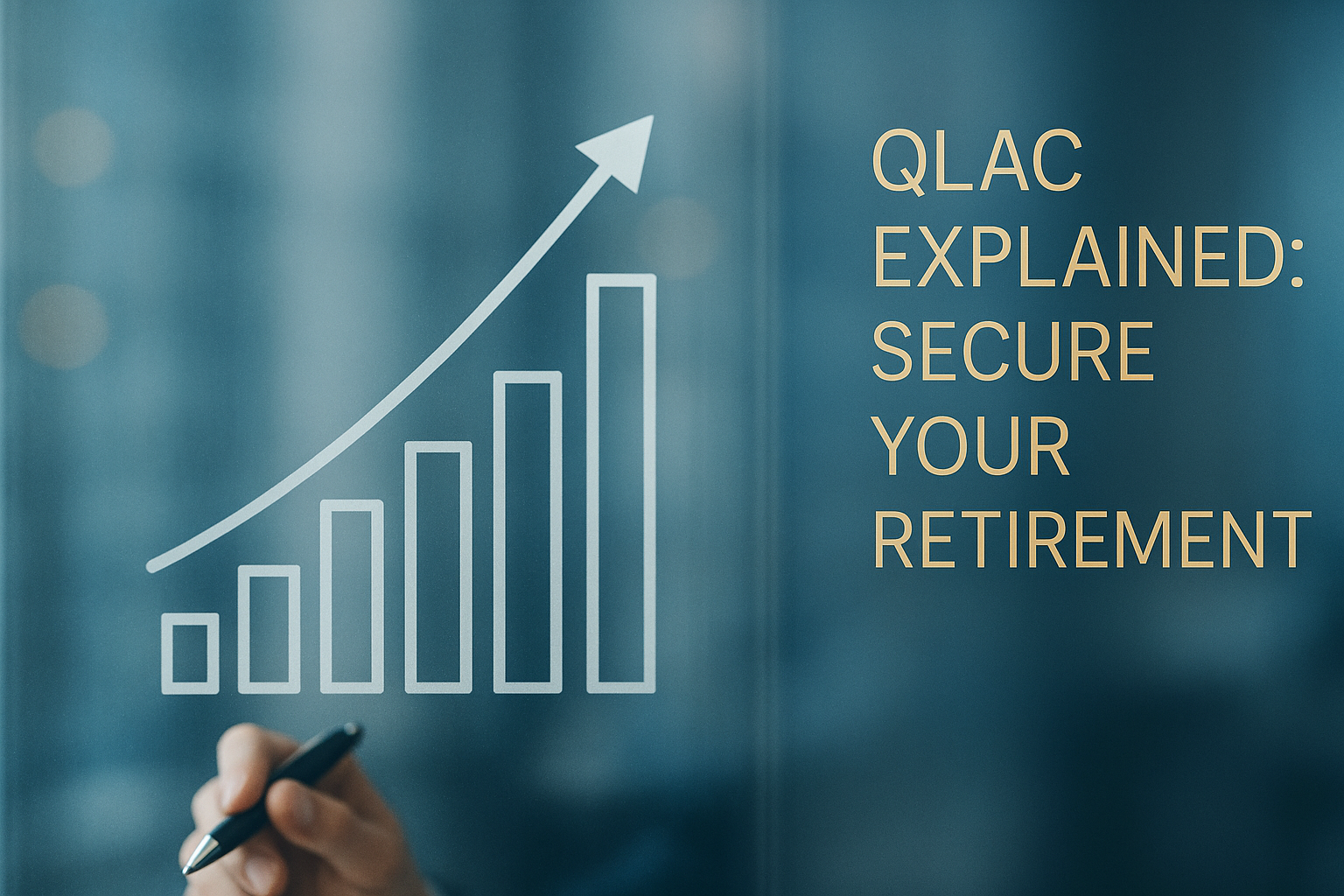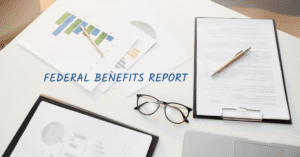QLAC Explained: Secure Your Lifetime Retirement Income
When you’re a federal employee or retiree mapping out your long-term finances, few things feel more pressing than knowing you won’t outlive your savings. Pensions like FERS offer steady income, but the reality of partial COLAs, evolving Social Security rules, and stock-market volatility can still leave you uncertain. As lifespans continue to rise, many households worry their nest egg might not stretch far enough. That’s where a Qualified Longevity Annuity Contract (QLAC) can help by delivering guaranteed late-life income while offering compelling tax advantages. Below, we’ll break down exactly how a QLAC works, why it matters for federal retirees, and how you can consider integrating it into a comprehensive plan with a seasoned financial advisor for federal employees.
Why Lifetime Income Matters for Federal Retirees
Federal employees often benefit from a pension and Social Security. Yet many find that these sources alone might not cover all future expenses, especially over a retirement that can last 30 years or more. Market returns and TSP balances are never guaranteed, and costs like health care can outpace inflation. The risk of outliving your assets—often called longevity risk—deserves real attention for anyone retiring in their mid-60s.
According to actuarial studies, federal retirees frequently live longer than the general population thanks to stable employment and access to robust health benefits. That is great news for enjoying more years in retirement, but it also increases the importance of strategic income planning. To illustrate how longevity risk can play out, consider the following table showing the probability of living to age 90 based on current age:
|
Current Age |
Probability of Living to 90 (Male) |
Probability of Living to 90 (Female) |
|---|---|---|
|
60 |
22% |
36% |
|
65 |
24% |
37% |
|
70 |
26% |
39% |
These numbers highlight the real possibility of living well into your 80s or early 90s. Even if you have a FERS annuity and Social Security, the gap between expenses and income grows more critical as retirees age. Longevity risk, combined with potential market volatility, shows how crucial it is to have a clear strategy for supporting yourself—and potentially a spouse—beyond the typical 20-year retirement horizon.
What Is a QLAC?
A Qualified Longevity Annuity Contract (QLAC) is a type of deferred income annuity purchased with funds from tax-advantaged retirement accounts such as traditional IRAs or a TSP rollover. Its principal goal is to guarantee you a consistent income starting later in life (as late as age 85). By allocating a portion of your retirement savings into a QLAC, you effectively set aside resources to begin paying you at a future date, reducing the risk of running out of money if you live longer than average.
QLACs also carry an important tax benefit: any funds used to buy one are excluded from your required minimum distribution (RMD) calculations until payments begin. Under the SECURE 2.0 Act, the previous 25% limit on how much of your retirement accounts you could allocate to a QLAC has been removed, and for 2025 the maximum dollar limit is $210,000. This extra flexibility can be a game-changer for those who want to defer income and RMDs longer. Although the Thrift Savings Plan (TSP) does not directly allow purchasing a QLAC, rolling TSP funds into a traditional IRA and then buying a QLAC is a clear path for many federal retirees. If you’re curious about details, check out Understanding TSP rollover rules.
How a QLAC Differs from Your FERS Annuity and Social Security
Your FERS annuity and Social Security each have COLA components, though FERS COLAs are partial and limited. By contrast, a QLAC usually pays a fixed monthly income for life starting at a chosen future date. While certain QLAC riders offer inflation adjustments, these typically reduce initial payouts to account for the insurer’s added risk. Perhaps the biggest distinction is the RMD deferral aspect: with FERS, you receive pension payments right away, but a QLAC defers them until a much later age, allowing you to keep the principal out of RMD calculations until payments start.
Installing a QLAC side-by-side with your FERS annuity and Social Security can stabilize your long-term cash flow. This is especially true if your spouse might outlive you and lose access to part of the bigger pension or if you anticipate a significant drop in income after a certain age. You can also coordinate a QLAC with a FERS survivor benefit or even a spousal planning strategy to help ensure both partners are covered in advanced years.
Mechanics: Funding, Deferral, and Payout
The QLAC process is straightforward. First, you decide how much of your IRA or TSP rollover (once moved to an IRA) to commit. Next, you select the future age you want the income to start, up to age 85. Once you sign the contract with your insurer of choice, your money is locked in and will generate a guaranteed stream of income beginning at your chosen date. At that point, you’ll receive monthly or annual checks for as long as you live, or under a joint life option, for as long as you or your spouse lives.
For example, imagine a married couple, both age 68, using $150,000 from an IRA to buy a QLAC that begins payments when they each turn 80. If either spouse lives to 95, they have secured 15 years of consistent income, regardless of what happens in the day-to-day markets. Of course, you’ll want to weigh the impact of committing a chunk of your assets for more than a decade. But for those who value long-term security, it can be a compelling option.
At any point you wonder how a QLAC might fit into your broader FERS plan, it’s worth discussing specifics with a professional. Curious how a QLAC could fit inside your TSP or FERS plan? Sign up for one of our free Federal Retirement Planning Workshops to learn how our Fed-Expert Financial Blueprint™ handles these opportunities.
Tax Planning Edge for Federal Employees
Beyond providing a delayed source of income, QLACs hold powerful tax advantages. Because your QLAC premium — the amount you put into the contract—is not counted toward your IRA or qualified plan balance for RMD purposes, you can reduce the annual RMDs you’d otherwise incur from age 73 onward. Lower RMDs often mean lower taxable income, which can mitigate the taxation of your Social Security benefits and help limit Medicare Part B premium surcharges (IRMAA). For many federal retirees, who may already have two pensions— FERS and potentially a military pension— managing RMDs becomes even more crucial to avoid unintended tax bracket creep. For more on avoiding surprises, read our guide on the RMD trap and Medicare premiums.
The table below shows a hypothetical scenario in which a retiree invests $150,000 in a QLAC and reduces annual RMDs by a small but meaningful margin, saving on taxes over time:
|
Age |
Traditional IRA Balance |
RMD Without QLAC |
RMD After $150k QLAC |
Tax Saved (25% Bracket) |
|---|---|---|---|---|
|
73 |
$800,000 |
$30,077 |
$24,327 |
$1,438 |
|
75 |
$770,000 |
$30,030 |
$23,405 |
$1,656 |
While these amounts are purely illustrative, they capture how QLACs can lower your adjusted gross income and potentially keep you under certain thresholds for Social Security taxation rates or Medicare surcharges. For the official word on RMD rules, visit the IRS website.
Pros, Cons, and Common Misconceptions
A QLAC is not a magical cure-all. It has pros and cons you should weigh carefully, especially in the context of overall retirement or survivor benefits. One key advantage is the guaranteed lifetime income that starts later when it may be needed most. The flip side is that money placed in a QLAC is illiquid until payments begin. Common misconceptions include the idea that the Pension Benefit Guaranty Corporation (PBGC) insures QLACs. In truth, these contracts are covered by state guaranty associations, which offer varying coverage limits. Purchasing from a financially strong insurer is paramount.
Some also assume QLACs automatically include inflation protection. While many insurers offer inflation riders, the initial payout is smaller than a standard QLAC’s to compensate for those increases over time. Another misconception is that you could simply “cash out” early if circumstances change. In reality, QLACs lock up your principal. If you have a cash-refund QLAC option, your beneficiary can receive the remainder of premiums you paid if you pass away early, but you cannot pull the entire balance back during your lifetime.
Who Is (and Isn’t) a Good Candidate?
QLAC suitability depends on several factors. First, ensure you have enough liquidity outside the QLAC to handle surprise expenses. Second, consider whether you already have multiple streams of guaranteed income, such as Social Security, FERS, or even a military pension, which may reduce the need for a QLAC. Third, if you have serious health concerns about longevity, a QLAC might not be the best use of your assets, since it essentially insures you against outliving your money. Finally, for those with no desire to manage RMDs or who simply want an additional safety net, a QLAC can bring real peace of mind.
Given that federal retirees often have access to the Federal Employees Health Benefits (FEHB) system, service credit purchases, and well-funded TSP accounts, there are plenty of ways a QLAC can fit into the puzzle. Individuals under older retirement systems like CSRS might also find a QLAC useful, though they should confirm their pension coverage and health status first. Research from the Employee Benefit Research Institute suggests that annuitizing even a portion of one’s retirement account can significantly enhance financial security for the oldest retirees.
Integrating a QLAC into the Fed-Expert Financial Blueprint
At PlanWell, we’ve developed the Fed-Expert Financial Blueprint™ to guide federal employees and retirees through key placement decisions, including how QLACs might fit alongside TSP balances, Survivor Benefits, and broader estate considerations. We consider factors like survivor needs for a spouse, tax bracket management, and whether your FEHB coverage might require a spousal plan if you pass first.
The Blueprint process starts by mapping your current cash flows, comparing them to your personal needs, and stress-testing for various scenarios. We also look at how a delayed annuity like a QLAC affects your overall portfolio structure. For instance, if your TSP investments lean too heavily toward the G Fund for safety, a QLAC might free you to invest some portion of your remaining funds more aggressively.
Often, the best way to see these strategies come to life is through a hands-on workshop or webinar. If you’d like more insight into how we help fit these pieces together, sign up for one of our free Federal Retirement Planning Workshops. We’ll walk you through real examples of how a QLAC might complement your existing FERS pension.
Choosing and Purchasing a QLAC
For those leaning toward a QLAC, you’ll want to research insurers carefully. Look for high ratings from agencies like AM Best to ensure the company’s financial strength. Then decide whether you want single-life or joint-life coverage, whether you need a cash-refund or death-benefit rider, and whether you’d like inflation adjustments. Next, confirm your IRA can receive a direct rollover from your TSP, and that it’s set up properly to fund the QLAC purchase. Remember, you cannot buy a QLAC directly inside the TSP; you must roll over to an IRA first. For official details on TSP guidelines, visit the Thrift Savings Plan website.
Also, be aware that state guaranty association protections are typically in the range of $100,000 to $300,000 in annuity benefits. It’s wise to spread QLAC premiums across insurers or keep the total under your state’s limit if you want added safety. By choosing a financially stable insurer, you reduce the risk of complications later.
Summary: Key Takeaways for Confident Retirement Income
A QLAC can be a powerful tool if you’re concerned about longevity risk or the tax bite of RMDs in retirement. It offers guaranteed late-life income, defers taxes on a portion of your savings, and can work in tandem with your FERS pension benefits. The decision to buy one, however, should not be taken lightly. You’ll want to go through a thorough plan that measures liquidity, health, and other potential income streams before committing. Since many of these decisions revolve around personal lifestyle and legacy goals, discussing them with a fiduciary professional who understands government benefits can help you feel confident in the final choice.
Ready to see the Fed-Expert Financial Blueprint™ in action for your retirement? Reserve your seat for our next FERS webinar
Written by a member of the PlanWell team holding the ChFEBC®, CFP®, and AIF® designations
FAQ
What happens if I need the money sooner?
QLACs are illiquid, meaning you generally cannot access the principal before payouts begin. If you opt for a cash-refund feature, your beneficiary can receive a lump sum if you pass away too soon—but you cannot tap the funds during the deferral period.
Can I combine a QLAC with my Survivor Benefit Plan?
You can coordinate a QLAC with the FERS Survivor Benefit Plan by ensuring your spouse is named to receive either joint-life payouts or the contract’s death benefit option. The SBP and QLAC address different risks, so it can be valuable to have both for layered protection.
Are QLAC payments subject to state income tax?
Yes, QLAC payments are generally treated as taxable income at the federal level, and most states also tax annuity income. However, some states provide partial exemptions or other breaks, so confirm with your tax professional or check your state’s official tax guidance.
How does a cash-refund QLAC work?
A cash-refund QLAC allows your heirs to receive the original premium (minus any payouts already made) if you pass away before receiving payments equal to the amount you contributed. It ensures your money isn’t “lost” if you die early.
How do I report a QLAC purchase on IRS Form 1098-Q?
Insurance carriers typically issue Form 1098-Q for QLAC contributions. You’ll see the year’s premiums paid into the contract reported here, and it’s used for IRS tracking of your QLAC. Any reputable insurer will guide you through proper documentation.












